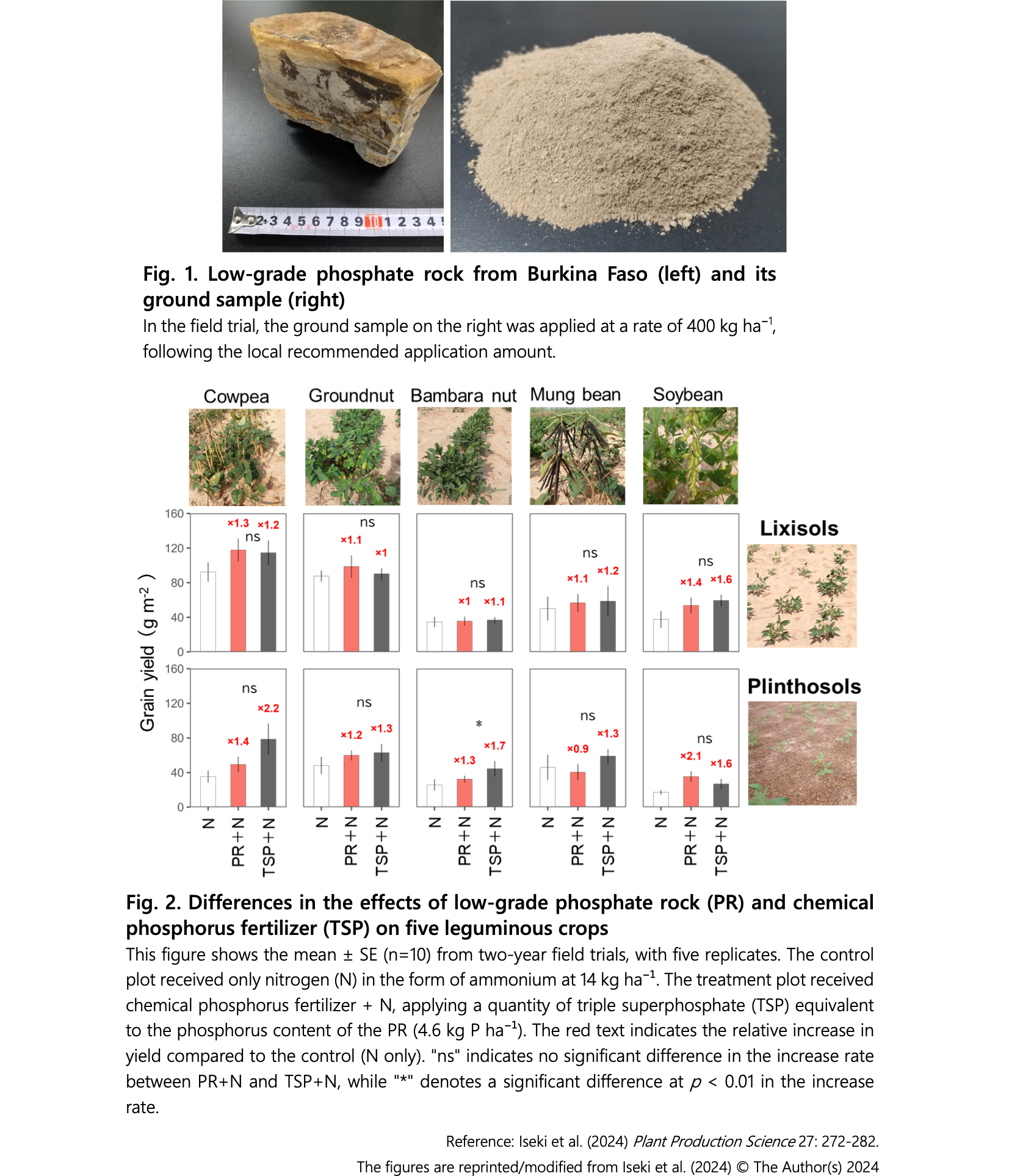Enhancing leguminous crop production in semi-arid regions with low-grade phosphate rock as an affordable fertilizer alternative
Description
Phosphorus deficiency in semi-arid tropical soils is a major limitation to food production, causing chronic poverty among smallholder farmers. Chemical fertilizers, which are essential to address this deficiency, are often too costly for farmers in many developing countries, and the recent rise in fertilizer prices has worsened this issue. Low-grade phosphate rocks (Fig. 1), which are rich in impurities and contain lower phosphorus content, are often underutilized. Ground low-grade phosphate rock (referred to as phosphate rock) can serve as a low-cost alternative to chemical phosphorus fertilizers. While phosphate rock’s effectiveness has been proven in rice cultivation, its impact on dryland crops is less understood. Leguminous crops, with their ability to fix nitrogen symbiotically and release organic acids that acidify the soil, may be more efficient at utilizing the insoluble phosphorus in phosphate rock. This study aimed to determine the suitability of phosphate rock for five leguminous crops (cowpea, groundnut, bambara nut, soybean, and mung bean) grown in two dominant soil types (Lixisols and Plinthosols) in the Sudan savanna.
Under typical rainfall conditions in the West African dry savanna, applying low-grade phosphate rock from Burkina Faso resulted in similar effects to chemical phosphorus fertilizers for cowpea, groundnut, and soybean (Fig. 2). Among these, cowpea and groundnut showed the highest absolute yields, while soybean, although yielding less overall, exhibited the highest yield increase. The type of soil also affected the results. Lixisols, being more nutrient-rich, produced higher yields than Plinthosols. However, the higher moisture retention in Lixisols led to excessive moisture stress, which reduced the effectiveness of the fertilizer. As a result, the yield increase from phosphate rock application was higher in Plinthosols than in Lixisols.
These findings indicate that low-grade phosphate rock can be an effective and affordable substitute for chemical fertilizers, contributing to improved crop production in low-fertility soils of semi-arid regions. However, the solubility of phosphate rock varies by source, so using more soluble phosphate rocks may yield better results. Additionally, when phosphate rock is applied without nitrogen fertilizers, nitrogen may become the limiting factor, potentially reducing the yield improvement. Therefore, proper nitrogen management is crucial to maximize the benefits of phosphate rock application.
Figure, table
- Research project
- Program name
- Term of research
-
FY2021-2024, FY2019-2022
- Responsible researcher
-
Iseki Kohtaro ( Biological Resources and Post-harvest Division )
Ikazaki Kenta ( Crop, Livestock and Environment Division )
ORCID ID0000-0001-5460-8570KAKEN Researcher No.: 70582021Nakamura Satoshi ( Crop, Livestock and Environment Division )
ORCID ID0000-0002-0952-5618KAKEN Researcher No.: 00749921Sidibe Hamadou ( Environmental Institute for Agricultural Research, Burkina Faso )
- ほか
- Publication, etc.
-
Iseki et al. (2024) Plant Production Science 27(4): 272-282.https://doi.org/10.1080/1343943X.2024.2400084
- Japanese PDF
-
2024_B08_ja.pdf773.69 KB
- English PDF
-
2024_B08_en.pdf1.49 MB
* Affiliation at the time of implementation of the study.

